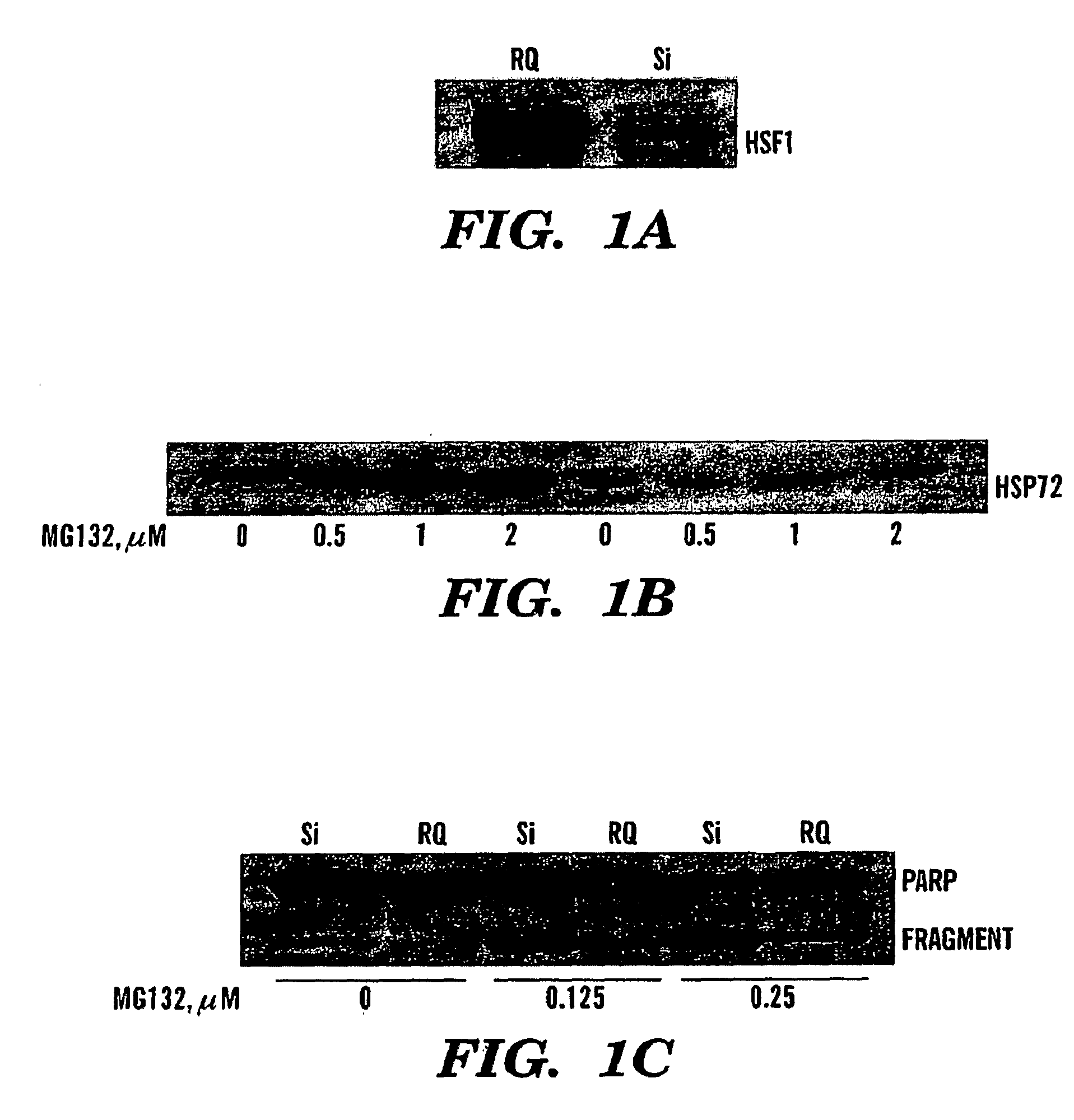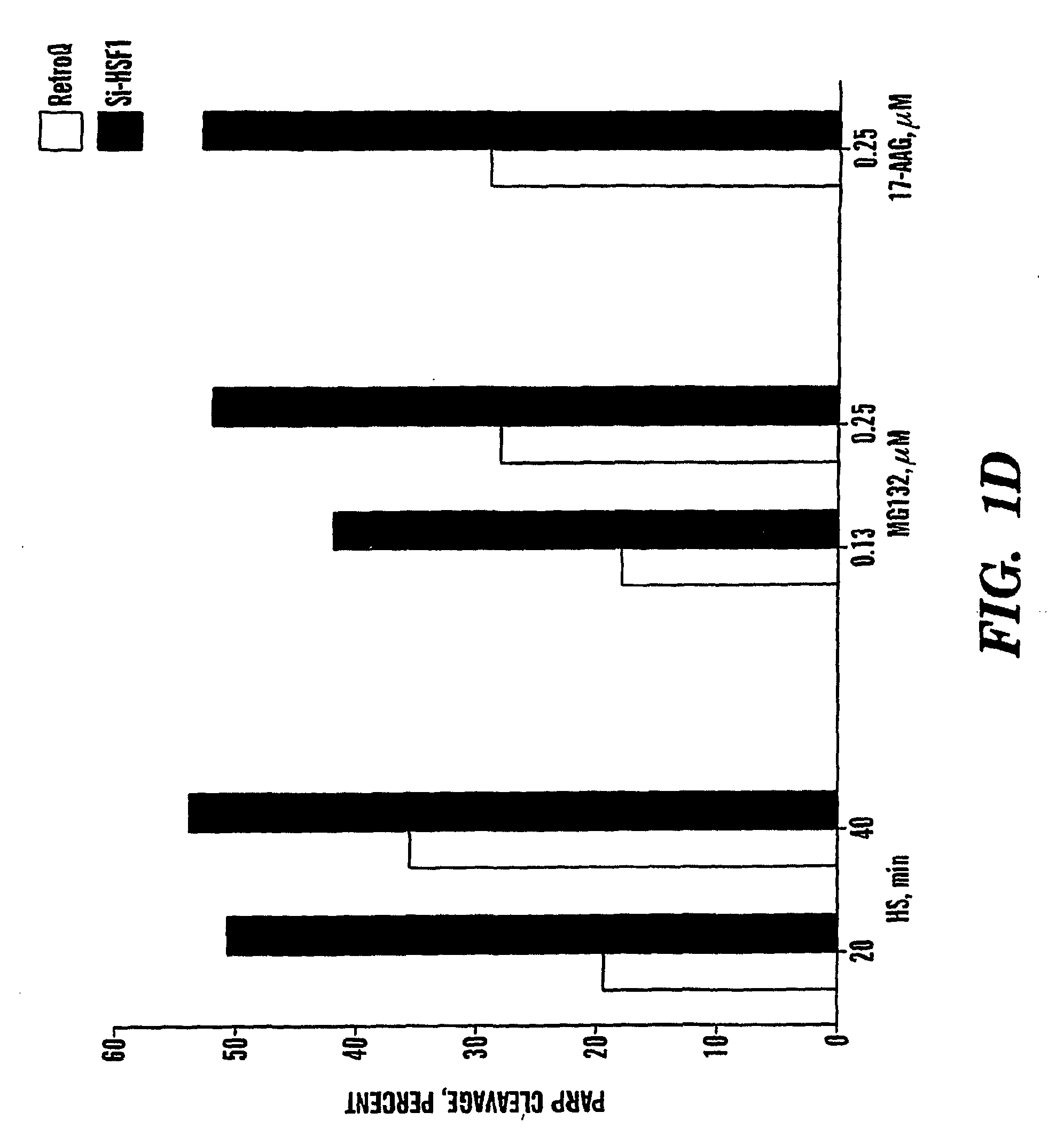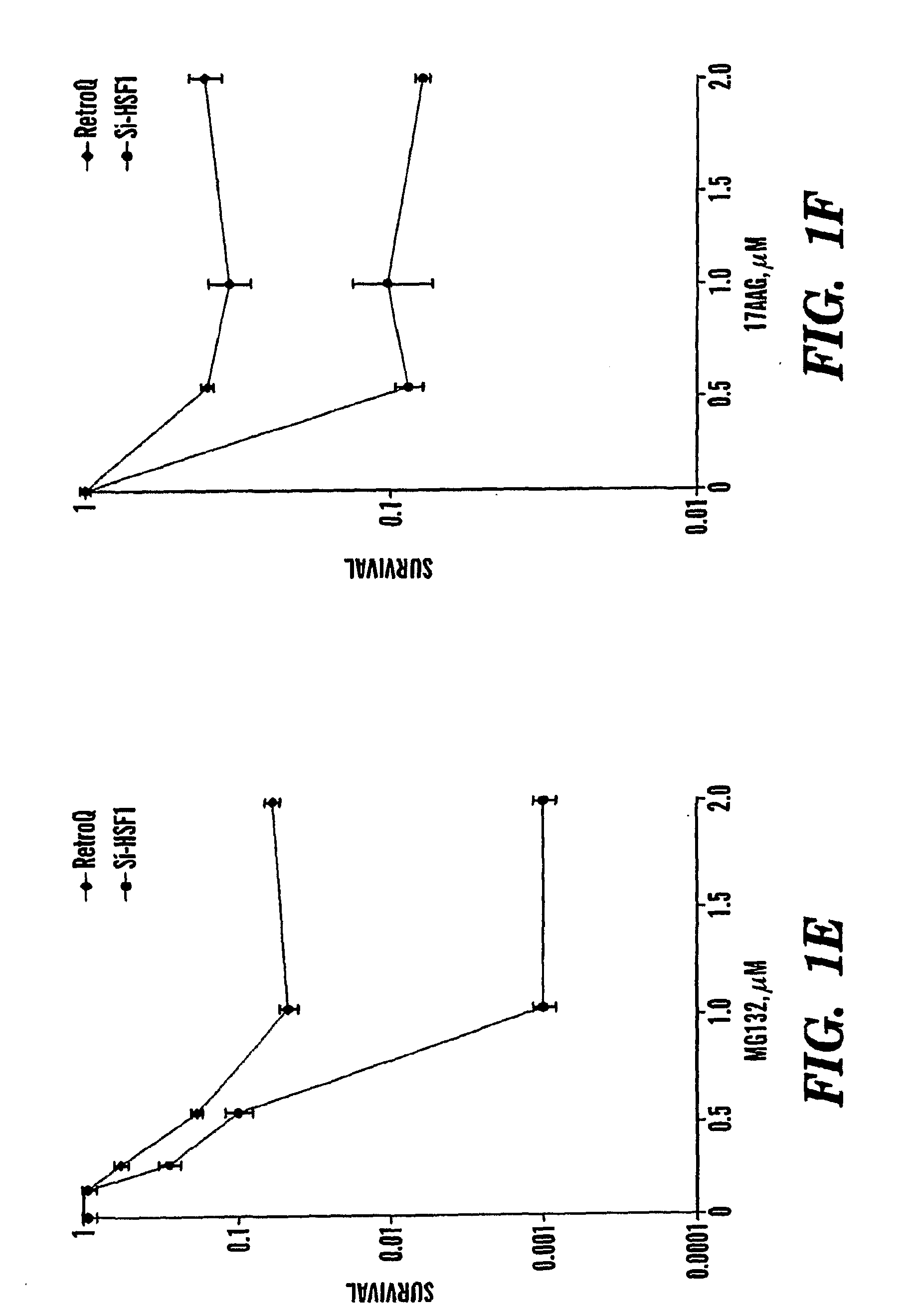Methods for Sensitizing Cancer Cells to Inhibitors
a technology of heat shock protein and sensitization method, which is applied in the direction of heterocyclic compound active ingredients, biocide, drug compositions, etc., can solve the problems of significant mortality, unclear mechanisms of heat shock resistance, and tumor formation, and achieve high throughput screening and inhibit heat shock protein induction
- Summary
- Abstract
- Description
- Claims
- Application Information
AI Technical Summary
Benefits of technology
Problems solved by technology
Method used
Image
Examples
examples
[0127]Inhibition of the heat shock response sensitizes cancer cells to proteasome and Hsp90 inhibitors.
[0128]Novel classes of anti-cancer drugs, HSP90 and proteasome inhibitors, are potent inducers of the heat shock proteins. Since Hsps, especially Hsp72 and Hsp27 have strong anti-apoptotic activities, we hypothesized that inhibition of the heat shock response may promote the cytotoxic effects of these drugs, thus enhancing their anti-cancer activities. Thus, we tested whether prevention of induction of the Hsps can sensitize cancer cells to these drugs. Since expression of Hsps is regulated by the major heat shock transcription factor HSF1, depletion of HSF1 must make cells unable to induce Hsps, as was previously shown with the HSF1− / − MEF cells 17. To deplete HSF1 in cancer cells, prostate carcinoma PC-3 cells were infected with retrovirus encoding siRNA against HSF1 (si-HSF1) or with a control virus (RetroQ). After a brief selection with puromycin, resistant populations were est...
PUM
| Property | Measurement | Unit |
|---|---|---|
| Fraction | aaaaa | aaaaa |
| Fraction | aaaaa | aaaaa |
| Fraction | aaaaa | aaaaa |
Abstract
Description
Claims
Application Information
 Login to View More
Login to View More - R&D
- Intellectual Property
- Life Sciences
- Materials
- Tech Scout
- Unparalleled Data Quality
- Higher Quality Content
- 60% Fewer Hallucinations
Browse by: Latest US Patents, China's latest patents, Technical Efficacy Thesaurus, Application Domain, Technology Topic, Popular Technical Reports.
© 2025 PatSnap. All rights reserved.Legal|Privacy policy|Modern Slavery Act Transparency Statement|Sitemap|About US| Contact US: help@patsnap.com



